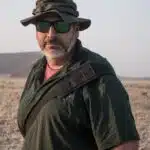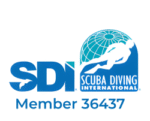A Scientists Scuba Diving Tours
Interview with Dr Ewald Lieske
Interview conducted by African Oriental founder Farhat Jah (FJ).
FJ: Dr Erwald, please tell our friends in the diving community: how did you start your career?
“Well-I studied biology and chemistry for 7 years in Hamburg University and Tubingen University (South Germany). There I did marine biology on ultraviolet radiation (and ended up killing thousands of animals). So I decided I could not stay at the university as I wanted independence. I could not continue with this research. So I taught biology and chemistry at gymnasium (academic high school) and then suddenly I went for 7 years to Maryland in the US to teach at the German Embassy School. I was able to explore America with my allowance and 11 weeks of summer holiday. Eventually I became a sub-director of the gymnasium.
Then after this school I went back to Germany to teach at a gymnasium and took several years off teaching to work on books, especially coral reef books and I painted about 3500 fishes. This was my start in the book world. The first book was Coral Reef Fishes (Harper&Collins) with the esteemed scientist and co-author Robert Myers. This was published in 11 countries and has been a best seller to laymen and scientists all over the world with 240,000 sold. I am told that this is still the best seller in this field.
Then I did the second book on Indian Ocean fishes with Dieter Eicheler. He was an excellent diver, and knew his limits. Sometimes I would go deeper than 50 metres to search for fish, and I would say to him “wait for me at 50- you don’t have to follow, but you must wait in case I need you”. I would explore- I love deep diving- and then return to him, and always safely. Then in the 1980’s I started writing for Tauchen, you know the German Dive Magazine. I was able to go to many places in the Indo-Pacific for them, and with the help of the airlines such as LTU.
I am now retired but I am here in Pemba to update my book on the Red Sea and Indian Ocean.”
FJ: How did you hear about Pemba?
“Well, when Dieter Eicheler and myself stayed in Shimoni in 1993 I saw an undescribed grouper of 60cm which had not been found yet. It was overlooked. And I met Ranjit Sondhi (the original pioneer of diving in Pemba and founder of the Manta Reef Lodge) and he praised Pemba very much. He brought us to Pemba with his wooden sailing boat. It was a Turkish Kayik type vessel. That was the start of three voyages of discovery to this beautiful Island.”
FJ: And what did you find when you came here?
“Very few people on the reefs, a very remote area here in the north where you are living now. And after diving with Dieter (and Ranjit) in several places, I was convinced that this was a very good good place for diving because of the proximity of the deep deep 800m Pemba Channel. We stayed about 2 weeks in this area. Ranjit had started building a dive camp with simple military tents and lots of holes in the mosquito nets! Ah- I was very afraid because I had suffered malaria in Indonesia and did not want to catch it again, but he had achieved something here. It was very difficult for him because of the bureaucracy and lack of infrastructure. There was absolutely nothing in Pemba- more or less nothing in the north. BUT- there was coral packed on every ridge near the lighthouse and even here in front of the coast. You could literally float down the coast like a TV film underwater.”
FJ: Dr Erwald, I ask this with some trepidaton, what do you find now ? How does Pemba compare with 1993?
“The village life has not changed, and the friendliness is still here. The forest however is smaller, thinner. I saw far more big trees near the lighthouse and all over. There is five times more indigenous activity in the north now.
But I am surprised at the survival of the coral places here. In the Matt Richmond book I read that 90% of the East African coral from Mafia to Kenya is dead. However on the outer reefs of Pemba this is simply not the case. I’ve found very nice stretches of healthy coral and vibrant reefs and best of all there are practically no divers on them.
To compare, and you must compare, there are 150 Live-aboard dive boats off the southern Egyptian Red Sea alone. This is quite different here. There is nothing here, in spite of El Nino, which killed a lot of corals there is no doubt – but there is still virgin diving here.
I have to say that 17 years ago we saw far more sharks and manta’s; up to 4-5 manta’s at Manta Point. Sadly these were all killed, or so Ranjit told me.
There are issues, there are too many people trampling on the reef flats but they need this protein, the people are poor. I won’t blame the children for taking out juveniles; they do not know any better. They need the protein.”
FJ: What have you seen UW in Pemba that is special or unique ?
“Practically all the East African species like the Smiths Toby but only one record of the African Angelfish are present. And at 30m you find a deep blue small fish, the Childictus Johnvolckeri, at Manta Point. It is interesting to see that some of the rarer parrot fishes of the Indian Ocean are common and close to the Pemba Channel. The variety of wrasses and snappers and puffer fish is good. You have 350-340 species of fishes. But here you will find 440 species. And many are visible in the close confines of Pemba water. I think the dives we did together in the Uvinje Gap (Slobodan’s Bunker and Devils Wall) are the best you have for fish observation.”
FJ: If I may ask, in the light of the damage that mankind is undoubtedly doing to the world’s ocean’s: why should people come here ?
“You come here to Pemba to see the pelagics, as the well as the variety of fishes. It is very important to come here during the European summer when the cooler water is coming up. Then you will see rainbow runners, king fish, sailfish, yellow fin tuna, pilot jack fish, and big eyed jackfish. On this trip we saw many of these, but I don’t want to lure people here on false pretences. Pelagics like cooler water coming up from the deep channel from May to November.
The three Gaps of Uvinje, Fundu and Njao are very special- partly due to the diversity of fishes, the marine scenery and the good coral health. This is due to upwelling of cool water, and there are no people that kill the fish kindergarten as it is too deep. Three very positive sites! The three gaps (Uvinje, Fundo, Njao) always have something to offer the diver. Good coral and sponge growth. That is important for the diversity like these big barrel sponges and finger sponges. Uvinje Gap has a very good count of fishes. It is better than 60 places that I have seen on an expedition in the Maldives in spring 2007, working with 16 biologists. And that is saying something.
I have to also mention Misali Island- beside these three top sites, you have to go to Misali Island Marine Park in the south-west. There is a fantastic area of table corals of 2-3m width and growing schindle-like. There is only some regrowth, most of them were not affected by the 1998 coral bleaching.The East African clown fish with the white tail (amphiprion allardi) is common here, far more common than on the Kenya Coast and it is unique to East Africa. There is also a Shimoni grouper (an undescribed species) to look for. We found this in 1993 between Pemba and Shimoni. (Dr Erwald was constantly looking for this). We have done two expeditions, both sponsored by LTU Airline, to find this fish and were unsuccessful. On Mafia I found the Mitra Butterfly fish and I think it must be here in Pemba too. This is a new record for East Africa – because if it is in Mafia it is also must be here.”
FJ: And Dr Erwald, what isyour final word on Pemba and it’s future preservation?
“Of course all good areas should be preserved. Yesterday I counted 68 people on the reef collecting shells and spear fishing. They collect every shell that they can find, and they trample even on the regrouping/recovering corals. This kills the marine food change, and this will harm your reefs for decades to come.
I went three times to the marine kindergarten and the children are spearing juvenile fishes in the tide pool. So for this reason you will get the same fish count as you did years ago.
But in short, these four places that I have mentioned earlier are the reason to stay as long as ten days in Pemba. There are indeed changes in Pemba, but considering the damage that has been done to other global underwater ecosystems in the last 20 years, Pemba is still a very special location.”
FJ: Dr Erwald, thank you for your thoughts on Pemba Island, and may all of us wish you the very best with your new book and your search for your special grouper.
“Thank you.”








